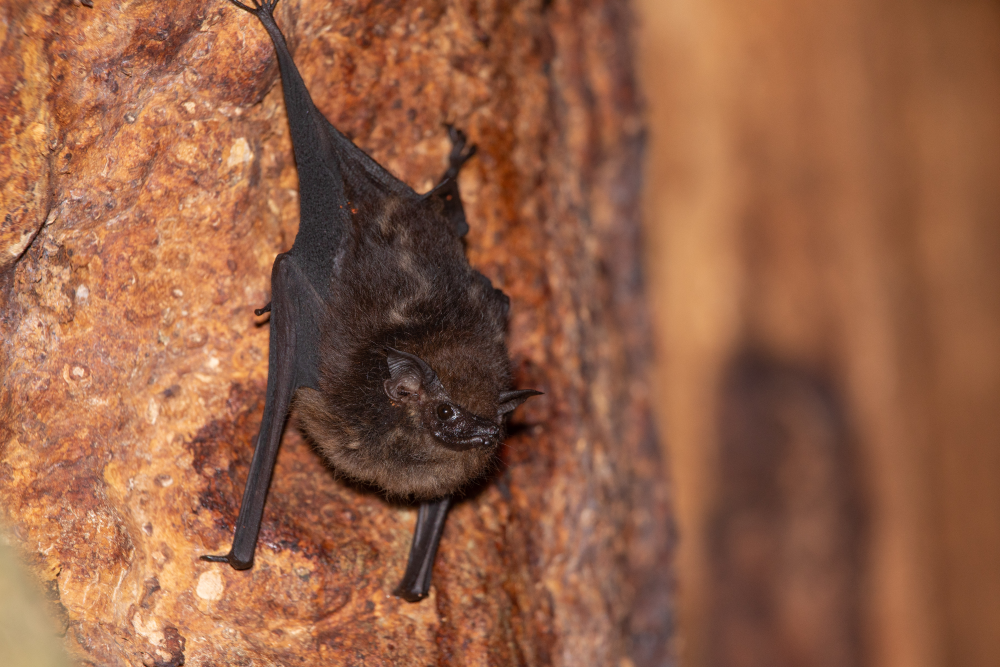If your friend starts screaming, but you can see them standing in front of you just fine, your response probably wouldn’t be the same as if they were in another room. That’s because you have the cognitive capacity to marry up the auditory information with visual information, combining them to accurately assess the threat and realize your pal is being dramatic. Turns out, bats can do the same thing.
ADVERTISEMENT
Catch a bat and you’ll be on the receiving end of loud, harsh vocalizations intended to spook a predator into putting it down. It doesn’t always work, but at the very least it can alert other bats to the danger. Upon hearing the noise, other bats will rush in to see what’s going on.
“They approach closely and often hover in close vicinity to the captured individual,” lead author Mirjam Knörnschild, Behavioral Ecology and Bioacoustics Lab at the Museum of Natural History in Berlin, Germany, told IFLScience. “They likely do this to 1) investigate what kind of danger this is, 2) distract the predator (i.e. us) or 3) mob the predator. Of course, none of these potential explanations is mutually exclusive, it could be a combination of several aspects.”
A team of scientists set out to test whether bats can recognize group members individually based on voice cues, focusing on the greater sac-winged bats, Saccopteryx bilineata, that live in Panama. Their investigations revealed that distress calls carry distinct vocal signatures, making individuals recognizable by their call alone.
In trying to work out if the calls were meaningful they did a playback experiment, sounding individuals’ calls when they were absent from the roost, and therefore potentially in danger. They then used a violation-of-expectation paradigm by playing the distress call of an individual when it was happily roosting in full view of the rest of the bats.
To our knowledge, the rejection of conflicting sensory information has not been shown in bats before.
Mirjam Knörnschild
This meant that what they could hear conflicted with what they could see, allowing the scientists to observe how they responded to conflicting sensory cues. Remarkably, the bats only responded to the distress calls of the absent bats, and when they heard the distress calls of bats they could see were just fine, they ignored them completely.
This ability to call bullshit and react accordingly means that bats can reconcile sensory inputs and reject contradictions, which is considered a hallmark of advanced cognition. That makes this the first time such a degree of cognition has been identified in bats.

Saccopteryx bilineata female roosting.
Image credit: Michael Stifter
“To our knowledge, the rejection of conflicting sensory information has not been shown in bats before,” said Knörnschild.
The study is another demonstration of the remarkable complexity of bats’ social lives, which in a previous study were found to babble as babies in a way that’s strikingly similar to human infants. Knörnschild also believes it’s a reminder of the importance of studying wild animals out in the wild.
ADVERTISEMENT
“Our finding that bats can assess the reality of a situation by integrating information from multiple senses and rejecting implausible scenarios, suggests that bats don’t just respond reflexively to distress calls but actively evaluate their context, similar to how humans process social cues,” she said. “Studying social communication in wild bats often reveals surprising capabilities, which bats may not show in captive settings. Therefore, we think it is essential to study behaviour in the wild whenever possible.”
The study is published in Current Biology.
Source Link: Bats' Bullshit Detectors Mark First Time Hallmark Of Advanced Cognition Recognized In Bats